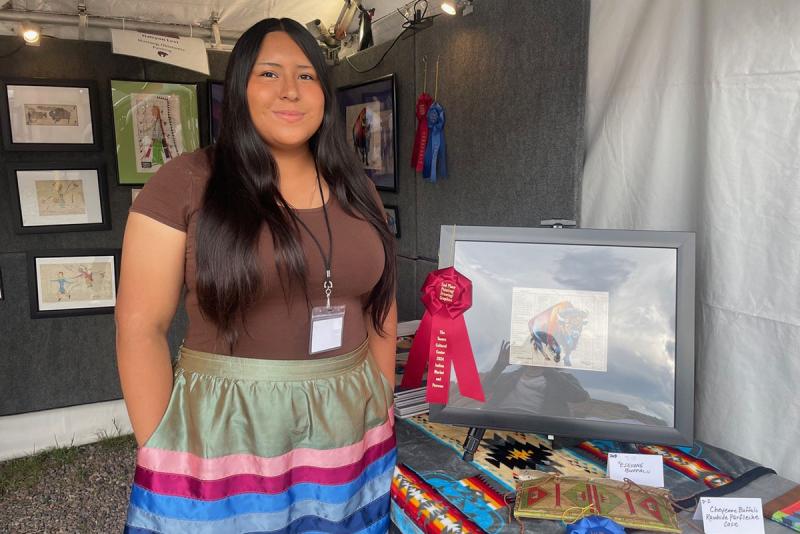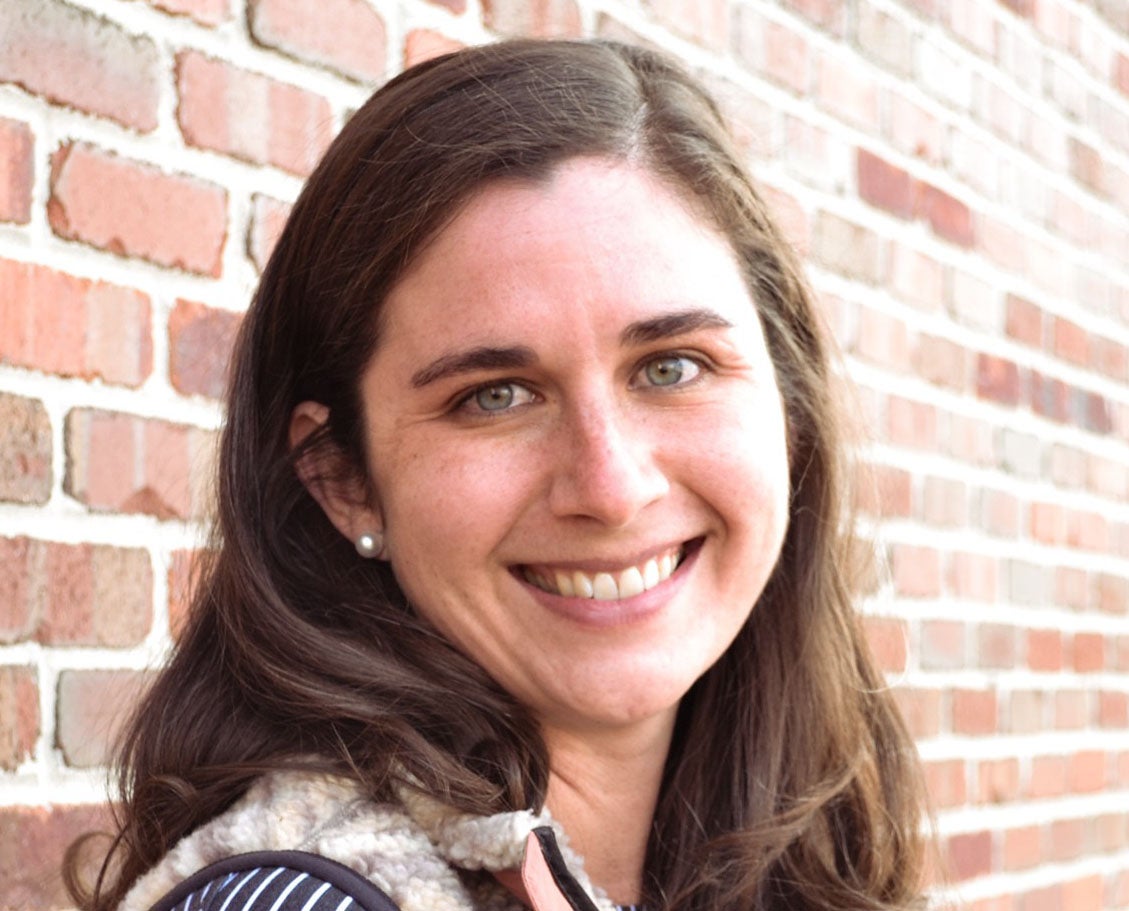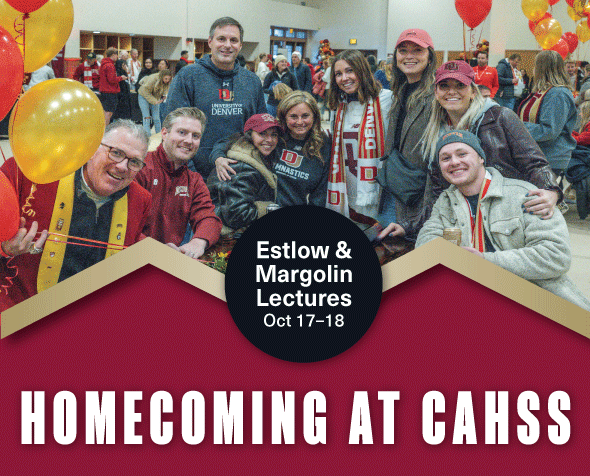Anthropology Student’s Gen-Z Perspective Provides Fresh Take on Native American Art, Historical Narratives

Halcyon Levi at the Annual Indian Market with her award-winning painting.
When Anthropology Student Halcyon Levi submitted a painting to the art show at the Tesoro Cultural Center Annual Indian Market and Intertribal Powwow in May 2024, she had no idea she would win an award and have her art acquired for the University of Denver’s collections.
A self-described artsy kid who grew up in Southwestern Oklahoma, steeped in the vibrant culture of her Southern Cheyenne, Arapaho and Kiowa heritage, she learned traditional ledger art from her father, artist George Levi. The artform, rooted in the 1800s, uses ledger paper to artistically record and display historical stories that were previously painted on Buffalo hides.
But how to combine her passion for history with her emerging artwork remained a mystery until 2021, when she accompanied her dad to the Denver Museum of Nature & Science to examine archived Native American pieces and encountered a traditional Cheyenne cradle board.
The ensuing conversation with an Indigenous Museum anthropologist empowered her to envision previously unforeseen educational possibilities.
“I realized anthropology was something I could pursue academically,” Levi said. “She told me how she got started and encouraged me to explore opportunities available through the Department of Anthropology at the University of Denver.”
Halcyon applied for and received DU’s Native Student Community Award Scholarship and started as an anthropology major in the College of Arts, Humanities & Social Sciences (CAHSS) in fall 2022.
Although she finds “approaching anthropology as an Indigenous person challenging because of a history of exploitation in the field and a history of genocide in the United States,” her anthropology classes provide a broader viewpoint.
“I’m able to see through the lens of my traditional, cultural perspective as well as a larger academic, anthropological context,” she said. “It’s a privilege to be able to bring my own perspectives to my educational experience at DU.”
Levi credits mentors like Indigenous Assistant Professor Kelly Fayard and Indigenous Assistant Professor Cornelia Santos with helping her navigate the college experience and find a sense of community with other Native American students on campus. They also have served as pivotal role models for how to approach a long male-dominated field from both feminist and Indigenous viewpoints.
“Dr. Santos’ classes focus on environmental justice and Indigenous rights and Dr. Fayard’s classes focus on Native North American anthropology and Indigenous tribalism,” Levi said. She credits both with providing support on multiple levels, along with her advisor, Associate Professor Nicole Herzog.”
“Halcyon created one of the most breathtaking works of art I have seen for the culminating project in my Indigenous Feminisms class,” Fayard said. “As a descendant of Sand Creek, she brings a unique perspective, even though DU’s founder, John Evans, was culpable in the Sand Creek massacre. Her parents are incredibly supportive of the entire DU Native community — we are lucky to have her!”
According to Levi, her classes are deepening her historical understanding, enabling her to push back against the anthropological assumptions of previous generations and anchor her original art in a contemporary framework.
“Historically anthropology has been a field that exploits Indigenous and marginalized communities for personal gain,” Levi said. “There are long-held narratives like that of ‘the disappearing Indian’ that claim that Native Americans are losing their cultural values and ties, which is just not true.”
Levi had attended the annual Powwow that aims to educate the public about Native American arts and culture with her family for years. But winning second prize for her painting that incorporates traditional and contemporary materials spurred confidence in her art and evolving educational journey toward becoming an anthropologist.
Levi’s dad also won a first-place award in the ledger painting category. All entries in the juried show were judged anonymously, and the judging panel included Associate Professor and Director of the School of Art & Art History Annabeth Headrick. Denver Curator of University Art Collections Geoffrey Shamos acquired Halcyon’s award-winning painting along with two pieces of her father’s artwork for the college’s growing Indigenous collection.
"We're thrilled to add these excellent works to the university's collection, where they can be enjoyed and appreciated by students, faculty, and the community,” Shamos said. “We love showcasing the talents of artists affiliated with DU."
Levi’s artwork was also recently displayed in a collaborative Denver Museum of Nature & Science and Denver Art Museum exhibit held in Fort Collins featuring the work of Rocky Mountain Indigenous artists. The exhibit compared authentic items from the 1800s with the work of contemporary artists. Levi spoke at an open-mic event on opening night.
“I was one of the youngest artists there and talked about how important it was for us Native Americans to be able to pass down our traditions as well as the significance of being a woman in this field and a Native American artist of the next generation,” Levi said.
“My dad’s art is much more traditional,” Levi added. “I use brighter colors that honestly are not realistic — vivid shades of blues, oranges and red — and come from a more feminist viewpoint.”
Her work often depicts wildlife, an homage to the hunting and fishing trips she still enjoys with her family.
She’s currently exploring anthropology internship possibilities with the Denver Museum of Nature & Science and refining her plan toward meeting requirements for graduating in June 2026 with a Bachelor of Arts in anthropology. Long-term, Levi hopes to pursue a graduate anthropology degree specializing in Indigenous art.
“I’ve been repeatedly told that I’m a trailblazer in my family and community for pursuing a degree focused on Indigenous anthropology and I hope to continue to live up to that in my future career, both as an anthropologist and an artist,” she said.





